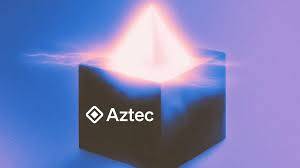HYPE Token Supply Contraction and Whale Accumulation: A Strategic Buying Opportunity
- Hyperliquid’s HYPE token repurchased 8.7% of supply via $1.26B buybacks and burned 3,200 tokens in 24 hours, tightening float and creating bullish bias. - Whale wallets spent $35.9M to accumulate 641,551 HYPE tokens, driving 2.5–5.8% price surges and signaling institutional coordination. - Technical indicators show sustained upward momentum, with HYPE gaining 7.5% in August despite broader market declines, supported by $105M fee-funded buybacks. - Risks include Bitcoin correlation and whale manipulation
Hyperliquid’s HYPE token has emerged as a compelling case study in deflationary tokenomics and institutional-grade accumulation, driven by aggressive supply contraction and whale-driven demand. As of August 2025, the platform has repurchased 8.7% of its circulating supply through $1.26 billion in token buybacks, while burning over 3,200 HYPE tokens in a single 24-hour period. This dual mechanism—burning tokens and reinvesting trading fees into buybacks—has tightened the token’s float, creating a structural bullish bias [1]. The deflationary model is further reinforced by Hyperliquid’s hybrid architecture, which combines Ethereum compatibility with high-performance trading infrastructure, attracting liquidity and institutional adoption [6].
Whale activity has amplified this narrative. A single whale wallet, 0xa523, spent $23.5 million to acquire 466,421 HYPE tokens, triggering a 2.5–5.8% price surge [1]. Simultaneously, another whale accumulated 175,130 HYPE tokens ($8.47 million) in 12 hours, with an average execution price of $48.35 [2]. These transactions, coupled with a dormant whale’s $3.94 million accumulation during a retracement from HYPE’s all-time high (ATH) of $51.05, signal coordinated institutional positioning [2]. Such behavior mirrors historical patterns where large investors drive short-term volatility and long-term price discovery, particularly in tokens with robust on-chain fundamentals [1].
Technical indicators corroborate the bullish case. HYPE’s price has maintained key support levels, with the Relative Strength Index (RSI) and Moving Average Convergence Divergence (MACD) showing sustained upward momentum [3]. The token’s 7.5% daily gain as of late August 2025, despite a broader market correction, underscores its independence from macro trends—a trait attributed to Hyperliquid’s institutional-grade infrastructure and high staking yields [4]. Analysts project that breaking the $50 liquidation cluster could trigger a sharp upward move toward $60, a target supported by the platform’s $105 million in fee-funded buybacks and a fully diluted valuation (FDV) of $44.21 billion [1].
However, risks persist. HYPE’s price remains partially correlated with Bitcoin’s performance, as evidenced by its recent surge following Bitcoin’s breakout [2]. Additionally, concerns about whale manipulation—such as the August XPL flash short squeeze exploiting isolated oracles—highlight structural vulnerabilities in DeFi platforms [4]. Yet, Hyperliquid’s Total Value Locked (TVL) of $721 million in August 2025 and $100 million in 30-day revenue demonstrate resilience, even amid sector-wide volatility [3].
For investors, the confluence of supply contraction, whale accumulation, and technical strength presents a strategic buying opportunity. The token’s deflationary mechanics and institutional adoption align with long-term value accrual, while short-term volatility offers entry points for risk-tolerant traders. As Hyperliquid continues to capture market share from centralized exchanges, HYPE’s trajectory appears poised to outperform, provided broader market conditions remain stable.
**Source:[1] Hyperliquid (HYPE) Price Prediction: Burn Mechanism Fuels Supply Squeeze Toward $60 [2] HYPE (HYPE) Whales Buy 175,130 Tokens ($8.47M) in 12 Hours [3] Hyperliquid Faces Whale Manipulation Claims as HYPE Reaches New All-Time High [4] Hyperliquid and the Risks of Pre-Launch Crypto Trading
Disclaimer: The content of this article solely reflects the author's opinion and does not represent the platform in any capacity. This article is not intended to serve as a reference for making investment decisions.
You may also like
XRP price may grow ‘from $2 to $10’ in less than a year: Analyst

Ethereum rising to $3.3K proves bottom is in: Is 100% ETH rally next?

Bitcoin hikes volatility into ‘tricky’ FOMC as $93.5K yearly open fails

New Ethereum Privacy Infrastructure: In-depth Analysis of How Aztec Achieves "Programmable Privacy"
From the Noir language to Ignition Chain: a comprehensive breakdown of Ethereum's full-stack privacy architecture.
